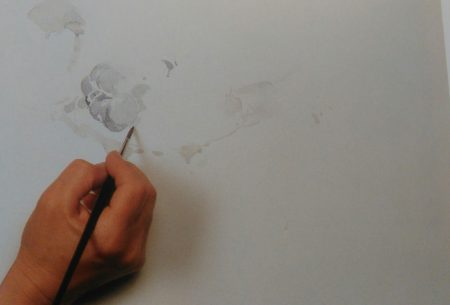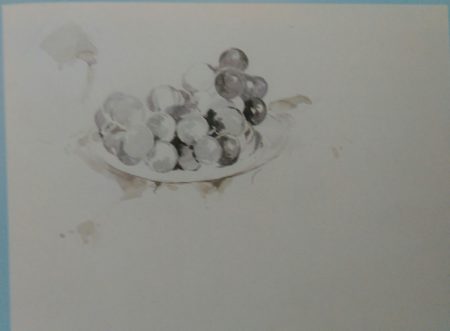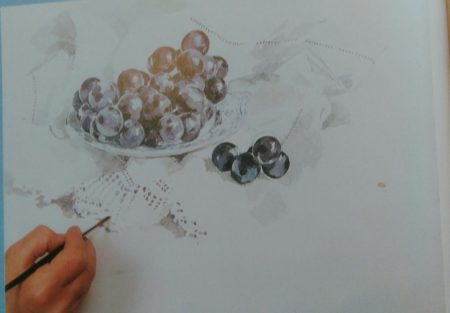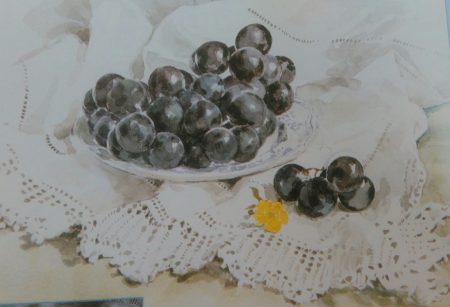What is important to remember is to not hold back while painting sometimes you achieve the most interesting effects by mixing chance and intent. One of the most interesting qualities of this painting technique is that you do not need a lot of tools and materials. All you need are paint, a few brushes and paper to paint on.
Materials and tools
They come in a tube in form of a thick wet paste or in little moulds semidry
You should always buy the best brushes you can afford for
There are also synthetic bristle brushes which are much cheaper then sable brushes but they are not able to hold paint as good as sable brushes. To prolong the life of your brushes treat them properly, never use them to rub in the
Return the hairs into the original shape after washing by gently rubbing them against the palm of your hand. Before putting your brushes away in a closed box make sure they are properly dried otherwise they could get mouldy. Basic


When it comes to
The weight of the paper is measured in grams by square meter. The lightest paper is 150 grams per square meter and the heaviest one is 640 grams per square meter. LIghter papers you must prim before using them for painting because they tend to change their shape and get all wrinkled due to de moist of the paint.
In order to

Black grapes
Painting from light to dark is the most common method of building the
For this painting you will need the following:
- A sheet of 285gr/m2
watercolor paper - Round sable brush number 3
- Round sable brush number 5
- Raw sienna
- Prussian blue
- Alizarin red
- Green
- Sky blue
- French ultramarine
- Cadmium lemon yellow
- Cadmium yellow
- Viridian green
- Raw umber

Sketching
Use the mixture of raw sienna and french ultramarine to define the position of the plate and the most important ridges of the cloth. In order to do that use round brush number 3. MIx ultramarine, Prussian blue, alizarin red and a little bit of green to get the grey-purple tone and start painting the grape leaving the whiteness of the paper on some parts for lighter areas of the grape.
Slowly build the darker tones by adding additional layers of the
Adding shape and form to the objects
Using the same dark and light mixtures of the paint, work on the shape and form of the grapes. Work methodically from light to dark carefully painting around the brightest areas. Determine the contour of the plate and work on the shadow below it with the pale mixture of Prussian blue, ultramarine, raw sienna and a little bit of alizarin red. Soften the edges of the shadow using a wet brush.
Continue working on the grape enrichening the grey-purple mixture with a little bit of raw sienna at certain areas. Working from light to dark is a very good technique that allows you to create a very realistic painting. Now paint the pattern on the plate with sky blue and point out the edges of it with the grey-blue mixture you already used on your painting. Slightly sketch the grapes scattered on the tablecloth with the pale mixture you used before.
Use a highly diluted mixture of raw sienna, ultramarine and a bit of brown to paint the ridges of the cloth with brush number 5. Determine the edges of the cloth by painting the shades it creates. With the darker version of the same mixture paint the decorative holes on the cloth using brush number 3.

Finishing touches
Pain the flower with the mixture of cadmium yellow and cadmium lemon yellow leaving tiny white areas on the petals for the brightest areas. For the leaves use the mixture of green, alizarin red and a bit of viridian green. With brush number 5 add clean water to the area of the green tablecloth. MIx green, sky blue and cadmium yellow and add it to the wet area with wide smooth strokes.
Go to the brush number 3and add the darkest tones on the grapes on the table outside of the plate using dark blue-purple gained by mixing Prussian blue, raw sienna, sky blue and raw umber. Add darker tones on individual details on your painting. Vary between shape an size of the decorative holes on the tablecloth to depict the ridges and pale shades on its surface.
At the end make the shadows around the edges of the white clots darker using the mixture of Prussian blue, raw sienna and a bit of alizarine red. Use the same mixture but a bit darker to go over the shaded areas on the tablecloth in order to point out the shaded ridges of the material.
I hope I managed to explain this technique well. If anything is still unclear I will be more than happy to help and answer any questions you might have regarding this subject. So feel free to leave them below. I hope you will enjoy painting with watercolos.





0 Comments